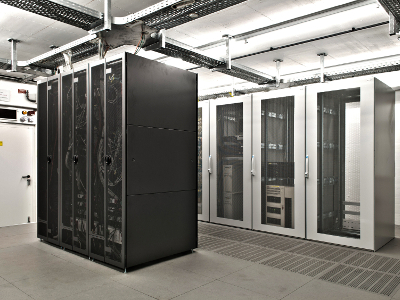
Now more than ever, data rooms are highly critical assets that need to be protected from the risk of fire. In an increasingly data-hungry climate, the load on data rooms is growing; there is more data to be stored than ever before and many organisations depend on sensitive IT infrastructure for the business-critical processes they are expected to perform.
Data rooms are being stocked with ever more complex and costly equipment and with this comes higher risk of fire. Should fire occur, the effect can be catastrophic. Not only is loss of data difficult to recover from, the downtime involved can harm an organisation’s reputation, productivity and revenue. In severe cases, service outages have been known to cost companies 30% of their annual profits. Indeed, many businesses who suffer from a major fire never fully recover, or even re-open.
The Increasing Risk of Fire
The growing pressure on data rooms means there’s a higher chance of overheating and wear and tear. Damaged cables, faulty power supplies and overheating components all pose a fire risk.
Quick reaction to fire is paramount. Damage can put your data room out of action for many weeks and the window of opportunity to prevent this is very small. Even if the situation is handled before flames catch, undetected smoke can cause irreversible corrosion to sensitive electronic equipment.
 Very Early Warning Fire Detection: ICAM ILQ
Very Early Warning Fire Detection: ICAM ILQ
Standard fire detectors are often unsuitable where early fire detection is required. This mainly comes down to data room cooling facilities, where the flow of cool air intended to prevent equipment from overheating can actually mask the presence of smoke by diluting the number of smoke particles in the room.
It may be no surprise then that we recommend very early warning fire detection (VEWFD) for this type of application. Last month, we introduced the ICAM ILQ Aspirating Smoke Detector as a practical solution for small area applications where very early warning is key. You can learn more about the ICAM ILQ in our blog but we’ve listed the main features below to refresh your memory:
|
|
High Protection, Low Cost
The ICAM ILQ aspirating smoke detector provides the best of Xtralis technology for minimal cost, especially when you consider the ramifications of failing to raise an alarm in time. The ICAM ILQ can be integrated with existing fire alarm systems and is very simple to install and maintain. There’s no need for commissioning software and pre-engineered pipe design also means there’s no requirement for specialist design tools or services.
The below image demonstrates how the ICAM ILQ can be set up using 1 sampling pipe per inlet with 2 x 4.5mm holes to cover a small server room:

If you think about your business continuity plan, does it factor in the implications of fire? Data utility companies (those that manage telecommunications and hosting) are known, and expected, to take extreme precaution against fire. Are you creating a weak link by failing to adequately protect your data room?
To find out more about very early warning fire detection and the ICAM ILQ feel free to contact Eurofyre on +44 (0)1329 835024 or by email to [email protected].
For all the latest fire protection news sign up to our newsletter using the form at the bottom of your screen or follow us online on LinkedIn, Facebook, Twitter and Google+.